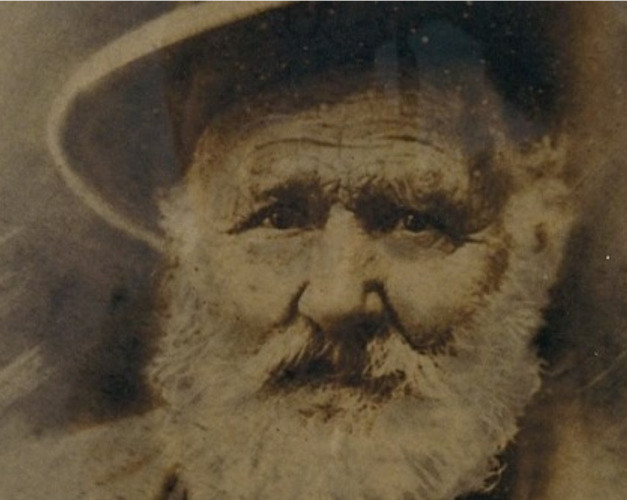South Coast NSW History Story
Thomas Newing
They are still there, more than 100 years later, a distinctive feature of the landscape of the region: dry stone walls built by Thomas Newing in the Kiama area (but also as far afield as Milton and Shellharbour) over a 60- or 70-year period from the late 1850s or early 1860s.
Thomas Newing was born in Kent in 1835 and arrived in Australia aboard the sailing ship ‘Anna Maria’ in 1857. He became a farm hand, initially in the Kiama area, until (to quote one newspaper report) ‘while clearing a very stony bit of ground at Foxground, he had to pack the stones in heaps. From these heaps the first stone wall in the district was built to fence a paddock. This fence proved such a success that the landholder had him build another line of fence.
Seeing a good opening in this line, Newing determined to master the secrets of this trade (for he made a trade of it), and he soon became an expert,’ and dry stone wall building then became his lifelong occupation.
Thomas’ life is well-documented in local newspapers.
In 1860 he married Maria Bailey, the daughter of one of the pioneer farmers of the Saddleback Mountain area. The marriage lasted only seven years before Maria died, two months after giving birth to their fourth child. Thomas never remarried and his three surviving children were raised by Maria's sister who lived in Kiama. One of his sons, Tom, later worked with his father, after leaving school at age 15.
‘Whenever he got a job of building a wall, he looked about for a sheltered spot to erect his tent, and would not go too far away from where water was obtainable, and where some fuel was available.
He would rise early in the morning and boil the billy and have some grub (food), as he termed it, and then start work. About three hours later he would again boil the billy and have some grub and a smoke out of one of his clay pipes, and then to work again, and so he carried on until nightfall…
The only company he had was the black and tan terrier known as Ponteau (Ponto), and
an occasional black snake. The only literature was a small bible, with very small print. He read it, without glasses and by candle light. He could quote scripture as many of us could say our A.B.C., and he lived in close touch with his Creator…
On Saturday evening he would go to town and would stay over Sunday with his daughter, Mrs. Cook, and return on Monday again to the job, with sufficient food to do him till the end of the week.’
His skill in making stone walls was documented: ‘When he was in his prime he could build a chain of wall (about 20 metres) in two days. He had a frame which he called "a set", and the set was set up about half a chain along the line that he was going to erect the fence. It was the shape of the wall externally, about four feet at the base and a foot wide at the top, and four feet high, and when the fence was built that high, he put a coping stone on top that made the wall 4' 6" or 4' 8" high. The stone would be drawn in close to the line on either side and the bigger stones were kept in the centre on the line…
Some of the foundation stones that he placed in the fences would be half a ton in weight. They would have been hauled in by a chain and a team of bullocks. First he would build up one side of the fence for a foot or 18 inches, and then go to the other side and do the same, filling in the centre with very small broken (blue) metal. He picked up a stone, any shape, and put it in its place like a bricklayer with a brick…
"Stones are like people," he told us once, "some are good to work with, they fit in anywhere, but," shaking his head, "others are cranky, you've got to humour 'em. Leave them to one side a bit and you'll get a place for them alright."’
Thomas Newing was very religious. ‘In that new district, where the settlers were scattered, mission halls were built, and ministers of all the denominations would have service in these halls in their turn. All the settlers would roll up on Sunday, irrespective of his or her creed.
One Sunday, however, a certain minister did not get to his post, due possibly to the swollen nature of the creeks after heavy rain, and as there was no means of getting a message through to the mission hall, the settlers had all gathered to attend the service. There appeared to be no alternative to them, but to go home, but as they liked to meet, not only for their spiritual welfare, but also to have a good gossip, as they had little chances of seeing one another during the week.
Two young chaps knew that Tom had often addressed the crowd in the Salvation Army meetings, and they made the gesture to Newing to take charge and hold the service, which he readily assented to. The hall was opened and the service proceeded, and after the service all agreed that those who attended were as spiritually refreshed by the old stone-wall builder as if the dinkum parson had officiated.’
Thomas Newing died in September 1927, age 92.
‘No man in Australia, perhaps, has more stone monuments to his memory.’
